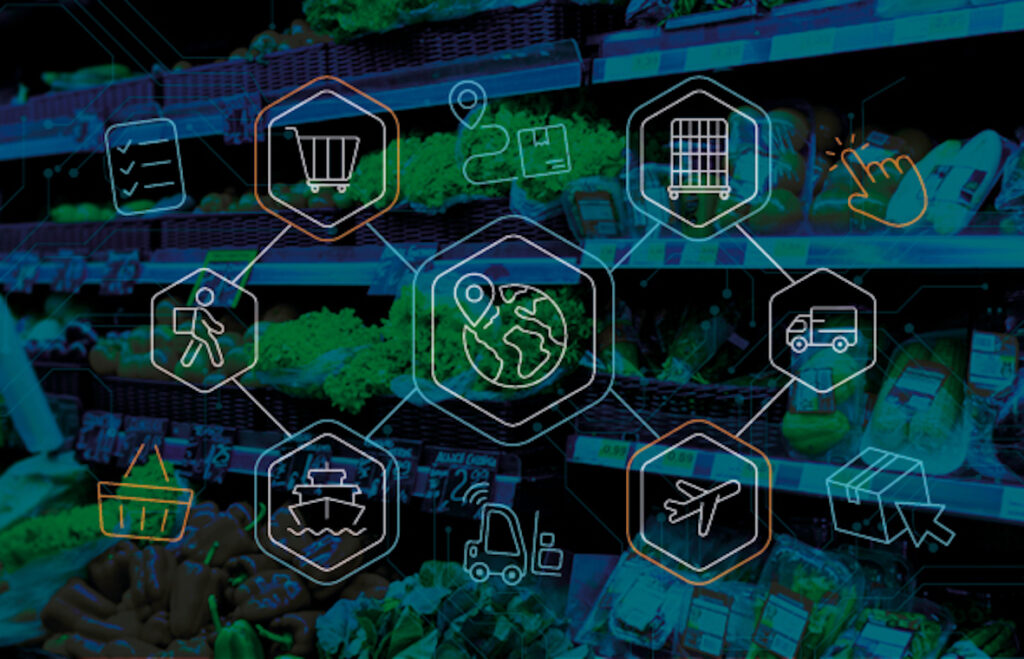Calling ‘order’ on Inbound Goods
20th May 2024

Supermarkets face a pressing need to automate their DCs. But first, they must put their inbound processes in good order. Dan Migliozzi, Sales & Marketing Director, at independent systems integrator, Invar Group, gets to the root of the problem.
With floor areas measured in hectares, carrying tens of thousands of SKUs to supply the daily needs of 67 million people, the distribution centres of our major food retailers are surely the textbook case for extensive and profitable automation.
Dependence on manual operations is looking increasingly unsustainable. Post Covid mitigation measures have introduced inefficiencies, recruitment is tough as the gap between the wage rates the food chain can afford and the salaries available elsewhere is growing, in contrast to the levels of skill, capability and commitment offered by those who are prepared to work for the money. Meanwhile, margins are shrinking in a highly competitive market faced with the ‘cost of living crisis’.
And yet in 90% of grocery DCs across Britain and Ireland, manual operations are still all-pervasive, and where the supermarkets have invested in automation the benefits and the returns on investment are often underwhelming. What is going wrong?
Feeding the beast
It’s not the technology. From the simplest conveyors to robotic arms and Autonomous Mobile Robots (AMRs), automation continues to become smarter, faster, more capable, more flexible, even more energy-efficient. The problem lies not with the appetites of the automation, but in how we feed the robotic beast.
Because, in a strange way, the robots are only ‘human’. Like us, they work most consistently and efficiently when presented with standard, predictable, ordered tasks. When the job is random or chaotic, even the latest advances in sensors, vision systems, artificial intelligence struggle – indeed, often human workers are better at creating order from chaos. Which is why even in relatively highly automated facilities there are many workers purely engaged in sorting goods so that they feed the right piece of automation in the right order at the right time.
This in turn arises because of the haphazard way in which incoming goods are received from suppliers. Too often there is no standardisation or uniformity in the way goods are received, even from one supplier let alone across the supply base.
Arriving in a mix of roll cages, totes, pallets, boxes, bags, goods destined for quite different routes through the DC are often mixed promiscuously. ‘Zero day’ goods, or consignments that should be cross-docked for immediate onward shipment, are in the same cage as goods that will be held for days; robust and heavy cartons of dry goods alongside (or on top of) the perishable or the delicate. There is little consistency in how labels and bar codes are presented. Even the distinction between ambient, chilled and frozen may be only loosely observed and within those categories, while surely no supplier would put cooked meats adjacent to raw chicken, lesser sins are regularly committed.
Need for SKU-specific protocols
In short, there are no SKU-specific protocols – rules that mandate the supplier that ‘this is how this SKU should be delivered, in these temperature conditions, and in this form of pack. These are items it can legitimately be co-shipped with; putting it in with those items is a no-no’. And so on.
Creating and enforcing such protocols across tens of thousands of SKUs is a major, we would say strategic, task, but it has to be done if automation is to yield its much-needed benefits.
Across the range of SKUs questions need to be asked. What am I receiving? When is it arriving? When does it need to go out again? Where will it be stored (if at all), in what conditions and for how long? Which are the items I want to see arrive together – based not just on the nature of the goods but on what is going to happen to them on their journey through the warehouse, which effectively is asking what elements of automation are going to touch these items?
Driving collaboration
This can’t be done in isolation. The supplier, after all, isn’t presenting a chaotic mix of items just to be awkward – they will have their own constraints, for example on batch sizes and times, or on their own storage capacities. So, this needs to be a joint venture – which in some cases will be the job of a 3PL or 4PL – working with suppliers almost in the role of consultants, to understand supplier challenges and making sure the supplier understands the challenges in the DC, so that goods can consistently be delivered in a way that can feed the automation with minimal intervention.
Naturally this requires top class, intelligent WMS/WCS not just for operations within the warehouse or DC, but to interact with outbound transport logic. There is a lot of data-driven software involved, but the benefits will be significant.
If the product is sorted logically before it hits the automation, the system works faster, more consistently, with smoother flows, better use of storage and so on. Further investment, in say scanners and vision systems, or AI applications, then becomes justified because the payback is visible and predictable. At the moment ‘the product is sorted logically’, more or less, by scarce and expensive manual labour – how much better it would be if it was already in order when it leaves the supplier.
read more
